Hoops Rumors is previewing the 2020 offseason for all 30 NBA teams. We’re looking at the key questions facing each club, as well as the roster decisions they’ll have to make this fall. Today, we’re focusing on the Indiana Pacers.
Salary Cap Outlook
After using their cap room last summer to sign or acquire multiyear, eight-figure contracts for Malcolm Brogdon, T.J. Warren, and Jeremy Lamb, the Pacers will have no space available this offseason.
With nearly $123MM in guaranteed money committed to 11 players so far, Indiana may not be in position to use its full mid-level exception without going into tax territory. The club is more likely to make use of the taxpayer mid-level exception ($5.72MM).
Our full salary cap preview for the Pacers can be found right here.
Roster Decisions To Watch
Options:
- None
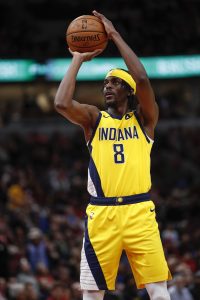
Non-Guaranteed Contracts:
- T.J. McConnell ($3,500,000)
- Note: Partially guaranteed for $1MM.
Two-Way Contracts:
- Brian Bowen (expiring)
- Naz Mitrou-Long (expiring)
Free Agents:
- Justin Holiday (Non-Bird)
- JaKarr Sampson (Non-Bird)
- Alize Johnson (RFA; Early Bird)
2020 Draft Assets
First Round:
- None
Second Round:
- No. 54 overall pick
The Pacers have their own second-round pick, but traded away their first-rounder (No. 24) to Milwaukee in last year’s Malcolm Brogdon sign-and-trade.
Three Key Offseason Questions
1. Has Victor Oladipo played his last game for the Pacers?
Oladipo will be entering a contract year in 2020/21 and he’s not a lock to remain in Indiana beyond his current deal. Ever since a spring report suggested that teams were monitoring Oladipo’s situation with the Pacers, rumors about his future have popped up more and more frequently.
The Heat were identified in the summer as a potential threat to lure Oladipo away from Indiana, with reports at the time suggesting the two-time All-Star would be prioritizing two things on his next contract: maximizing his earnings and putting himself in position to win a championship.
The unstated implication? If Oladipo decided the Pacers weren’t on track to become a legit title contender, it might make sense for him to push for a trade to a preferred destination sooner rather than later, since that would put him in position to get the best possible offer from that team in free agency (when he becomes a free agent, his current team can offer him more years and more money than rival suitors).
As a result of those earlier rumors, it didn’t come as a major surprise when a September report indicated Oladipo was “looking to move on” from Indiana or when a second report confirmed that he’s a candidate to be dealt this offseason. The 28-year-old has since attempted to downplay that chatter, but at this point it would be a bit surprising if Oladipo remains with the Pacers through 2020/21 and then signs a long-term deal with the franchise.
Throughout the process, the Pacers have stated that retaining Oladipo is a priority and have shown signals that they’ll do all they can to make it happen. They were even willing to pay him the remainder of his 2019/20 salary when he initially planned on opting out of the summer restart to focus on his health, despite the fact that he’d received medical clearance from doctors.
But if Indiana knows Oladipo plans to leave in free agency in 2021, it’s in the organization’s best interests to see what it can get for him before then rather to resign itself to losing him for nothing. The Pacers’ willingness to take that route with Paul George was the reason the team landed Oladipo (and fellow All-Star Domantas Sabonis) in the first place.
The challenge for the Pacers if they explore the trade market for an Oladipo deal will be finding a trade partner willing to give up a package that reflects the guard’s pre-injury value. Since Oladipo returned from his torn quad tendon in January, he hasn’t quite looked like the same player — in 19 games this season, he averaged just 14.5 PPG on .394/.317/.814 shooting.
Questions surrounding Oladipo’s health and production going forward will complicate any trade talks, especially if suitors believe they’ll have a shot to sign him outright in free agency a year from now. As such, an offseason trade definitely isn’t a sure thing.
In fact, sticking with Oladipo and hoping he looks like his old self to start next season may end up being Indiana’s best strategy. If Oladipo alleviates his health concerns in the first half, the Pacers could potentially extract more value for him at the trade deadline than they could this offseason — especially if multiple contenders view him as a missing piece for the stretch run.
2. Will the Pacers break up the Domantas Sabonis/Myles Turner frontcourt?
Since acquiring Sabonis in 2017, the Pacers have stubbornly insisted that he and Turner are capable of sharing the frontcourt in Indiana. They’re not necessarily wrong, but after three years of experimentation, it seems obvious that – despite some modest success – the two big men don’t exactly fit together seamlessly.
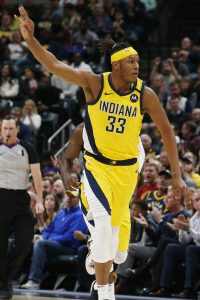 Two developments during the 2019/20 season may help steer the Pacers toward the idea of trading Turner.
Two developments during the 2019/20 season may help steer the Pacers toward the idea of trading Turner.
The first was Sabonis’ emergence as an All-Star caliber player. He enjoyed a breakout year, averaging 18.5 PPG, 12.4 RPG, and 5.0 APG on 54.0% shooting in 62 games (34.8 MPG) and was badly missed during the restart when he was sidelined by a foot injury. He was perhaps Indiana’s best player in ’19/20 and is about to begin a team-friendly four-year, $75MM deal. It makes sense for the Pacers to keep him.
The second development was the emergence of T.J. Warren as one of the NBA’s most impressive scorers this summer. Warren’s numbers during the seeding games (31.0 PPG) almost definitely aren’t sustainable, but the fact that he enjoyed his best stretch of the season while serving as the team’s de facto power forward was eye-opening. He might not have been in position to produce like that Walt Disney World if both Sabonis and Turner had been healthy and in the starting lineup.
Turner is one of the NBA’s best shot-blockers and has knocked down 35.9% of his three-pointers over the last four seasons. He’s just 24 years old and he still has three years and $54MM left on his contract. That’s a very fair price for a two-way center entering his prime. He’d be a tremendous trade chip if Indiana makes him available — I wouldn’t even be shocked if the Pacers get a stronger offer for him than for Oladipo.
Cashing in Turner for 50 cents on the dollar because of the positional overlap with Sabonis would be a mistake, but there’s no indication the Pacers will make such a deal. If they do move Turner, they’ll do so with an eye toward acquiring an impact player who better suits their roster. I’ll be very interested to see if they can find that sort of trade this fall.
3. Who will the Pacers hire as their head coach?
Nate McMillan‘s ouster in Indiana this summer came as a bit of a surprise, since the veteran head coach had led the Pacers to a top-four seed in the East despite a handful of injury issues this season. Two key factors played a role in the front office’s decision — McMillan’s playoff record and his offensive style.
The Pacers are reportedly seeking a head coach who can modernize the club’s offense and get the team over the hump in the postseason after McMillan lost 16 of 19 playoff contests during his four-year tenure.
President of basketball operations Kevin Pritchard and the front office know they’ll have to hit a home run after parting ways with a popular head coach who had outperformed expectations during the regular season. All indications are that the organization is doing a ton of homework in an effort to make the right hire, having reportedly spoken to more than 20 candidates so far during the search process.
Indiana’s pool of contenders ranges from experienced former head coaches such as Mike D’Antoni, Mike Brown, and Dave Joerger to up-and-coming assistants like Darvin Ham, Ime Udoka, and David Vanterpool to a potential first-timer like Chauncey Billups.
Although McMillan’s dismissal wasn’t entirely expected, the Pacers generally don’t have a quick trigger finger when it comes to their head coaches — the team’s four most recent coaches have each served for four or more years. This is also the first time since his 2017 promotion that Pritchard will be responsible for a head coaching hire, so he’ll be looking for someone who can lead the franchise for years to come. It will be fascinating to see which direction the club goes.
Information from Basketball Insiders and ESPN was used in the creation of this post. Photos courtesy of USA Today Sports Images.
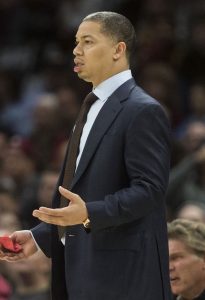
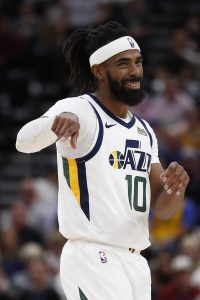
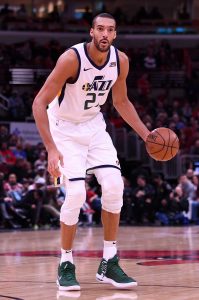 Mitchell’s next deal will also be a little more cost-controlled than Gobert’s could be. Even with an All-NBA berth next season, Mitchell can’t sign a rookie scale extension exceeding 30% of the cap. Due to Gobert’s All-NBA nods and DPOY awards, he has qualified for a veteran extension that can be worth up to 35% of the cap in 2021/22.
Mitchell’s next deal will also be a little more cost-controlled than Gobert’s could be. Even with an All-NBA berth next season, Mitchell can’t sign a rookie scale extension exceeding 30% of the cap. Due to Gobert’s All-NBA nods and DPOY awards, he has qualified for a veteran extension that can be worth up to 35% of the cap in 2021/22.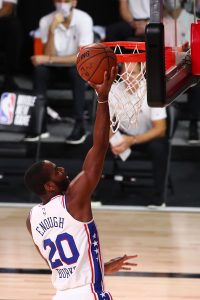
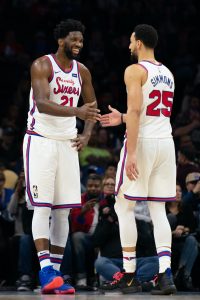
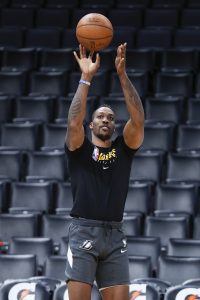 During their run to the NBA Finals, the Lakers have matched up with talented opposing centers such as
During their run to the NBA Finals, the Lakers have matched up with talented opposing centers such as